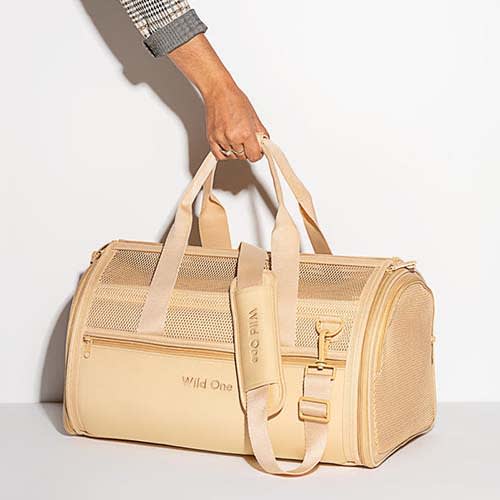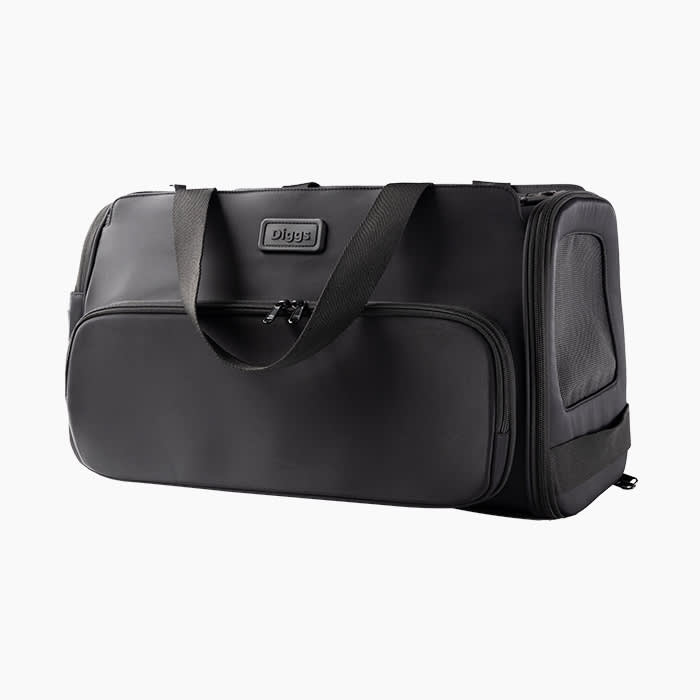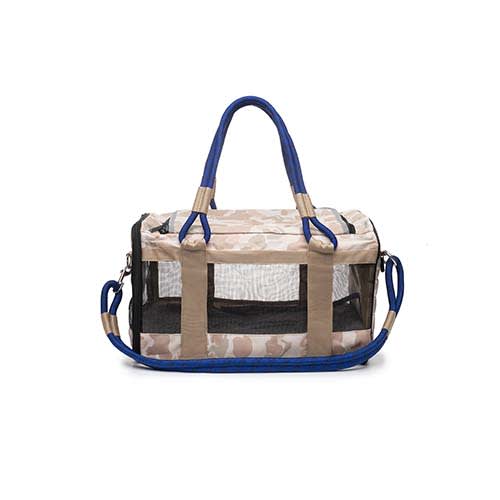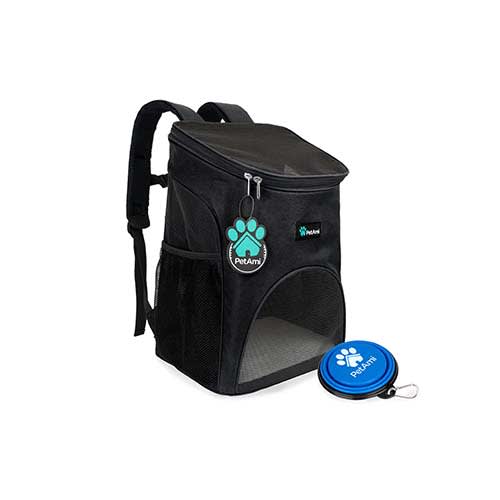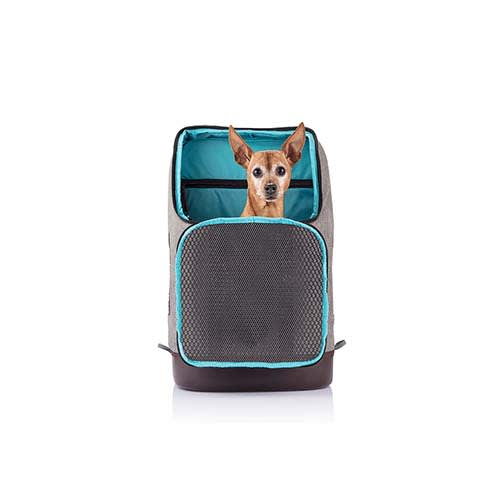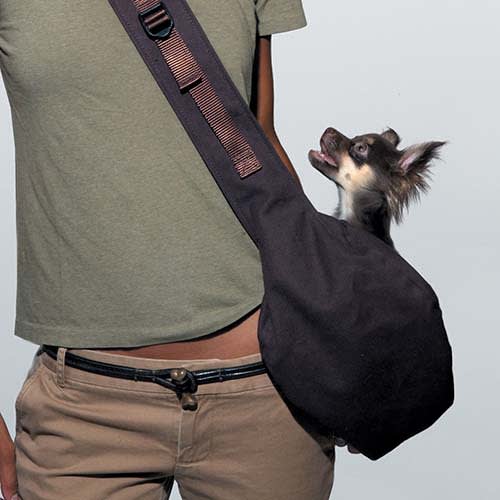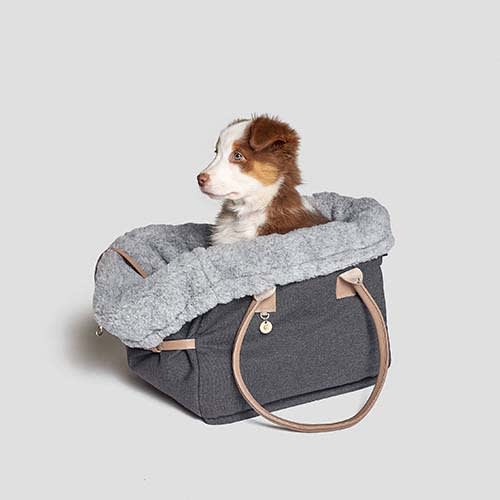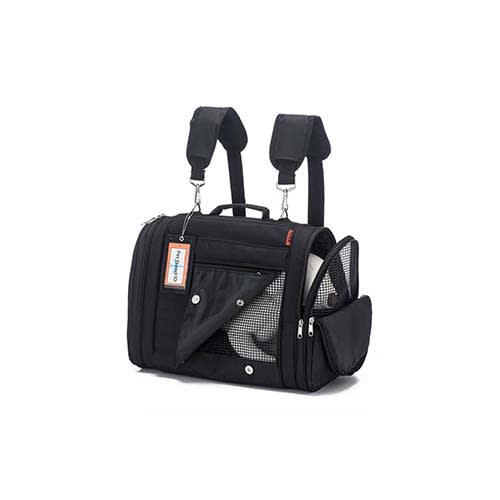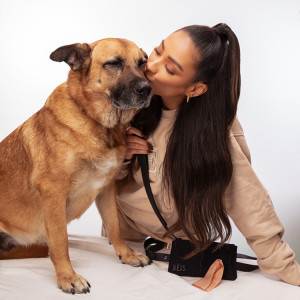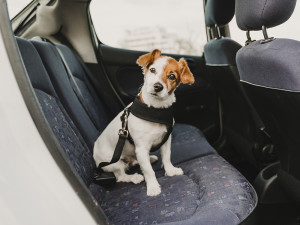The Best Dog Carriers For Planes, Trains, and Automobiles
Whether you’re driving cross country or flying internationally, your pup can comfortably tag along.

share article
If a comedian attempts a routine based around the perils of airline travel, they are generally sequestered to hack territory — and for good reason. The ever-evolving nuisance of the flight experience is well documented to the point that hearing someone reflect on it can feel exhausting and trite. That being said, long security lines and inconsistent departure times may cloud us from one universal truth — traveling sucks on the ground, too. Add a furry companion to the mix, and it’s a whole other level of stress that really underscores it’s dangerous business walking out the front door.
But a good pet carrier can ease much of this anguish, allowing you to focus on the endless benefits of leaving your comfort zone, seeing new locations, and smelling fresh air. For guidance on which carrier is best for every dog, we asked an expert, Dr. Elizabeth Shines. So whether your destination is a few miles, states, or continents away, you can be prepared with the most effective seat for your copilot.
What to Consider When Traveling
When traveling with a dog, you should consider your means of transportation, first and foremost. “I think the main consideration is the main purpose of the carrier. Different carriers may be more suited to car travel versus a carrier to bring a pet into stores/entertainment venues versus airline travel carriers. It’s possible one carrier could be suitable to all options, but some of that would be personal preference and style,” says Dr. Shines. It may seem obvious, but I’ve personally made several trips 50 times harder by wearing the wrong shoes or bringing a less functional bag to make my outfits one times cuter — so you’d surprised how easily the wrong equipment is used when leaving home. Unfortunately, as an extension of us, our pets are not immune to the perils of human vanity — at least mine isn’t.
Depending on your mode of transit, different factors should be prioritized for your pup’s comfort. According to Dr. Shines, “For instance, when traveling by car, you might want to give your pooch a little more room to move around. You might also want a hard-sided carrier to provide more protection in the event of an accident. But would you want to bring a big, hard-sided carrier to a small, fancy boutique store? Probably not.”
Additionally, a pet’s personality and existence of any potential medical considerations should also be considered. “A shy dog may like the privacy of a carrier without a lot of ‘windows’. A pup with a flat face who may be more sensitive to heat may do best in a well-ventilated carrier (if going into a warm climate) instead of a purse-type pet tote that molds/covers the body,” says Dr. Shines.
How Pet Carriers Help
Beyond avoiding the experience of chasing your runaway dog around an airport, there are plenty of benefits to utilizing a pet carrier when traveling. If you’re driving, having them comfortably contained will minimize the potential for distraction — therefore making the ride safer. But if an accident were to happen, a good carrier also provides extra protection for the dog.
Dr. Shines confirms that unrestrained pets are much more likely to get injured before detailing possibly the largest boon to pet carriers — many dogs love them. “Carriers can also be seat-belted into the back seat and this provides another layer of protection. Lastly, for some pets, it can help to decrease anxiety as well if the crate is viewed as a ‘safe space’ by the pet,” she explains. Bottomline — there are few things more exciting and rewarding than traveling, and there’s no one we’d rather experience that with than our pups. Below, options for every adventure.
Btw, our editors (and their pets) picked out these products. They’re always in stock at the time we publish, but there’s a chance they’ll sell out. If you do buy through our links, we may earn a commission. (We’ve got a lot of toys to buy over here, you know?)
Best Carriers For Flights
Given most airlines’ reputations for strict baggage guidelines, more than any other travel method there are ample carriers created specifically for flight. Each of the following options features airline-approved dimensions and is designed to keep your pup comfortable while in the skiesopens in a new tab. However, longer trips may require additional care and consideration. “A person should also take into consideration how things will play out during layovers and other situations that prolong travel. For instance, travel by air often includes long layovers in large airports where one might have to walk a mile or longer to get to a connection! For this reason, a carrier with wheels that can be pulled rather than carried may be preferable than one to carry,” explains Dr. Shines.
Best Carriers For Car Rides
Traveling by car will award the most freedomopens in a new tab in terms of size and material — though you can still help keep your dog extra comfy. These carriers are spacious and cozy while being easy to strap in opens in a new taband contain within a car seat.
Best Carriers for Adventuring
To our hikers and backpackers, these options are for you. Each offers the chance to strap your pup to your back or side for adventuring by foot. Dr. Shines sees these as mostly positive. “Backpack styles are convenient because it frees up the hands and arms. These are a great style if the weight of the pet is fine for the human’s back and shoulders. These styles often can allow the pet’s head to be out of the carrier for more freedom which they might enjoy. Plus some of them look pretty cool,” says the expert. But she does caution against using these for older dogs or ones with certain pre-existing conditions. “Due to the lack of structure, these may not be a great option for pets who have arthritis or other musculoskeletal issues. They can’t stand or move around as easily so this might make them stiff or stuck in an uncomfortable position,” she explains.
Best Carriers for the Daily Commute
Maybe you bring your dog to work with you every day or maybe you want to start — these are the best options. They can be held in hand or over the shoulder, making each suitable for short walks or bus and train rides to the office. This can be pretty handy according to Dr. Shines: “Carriers that are carried in hand are convenient because they can set down as needed. They will fully contain your pet, provided they are appropriately zipped/snapped. They also create a barrier between the pet and other pets/people. This means no well-intentioned pets or people will be reaching out to touch the pet (which the pet may not appreciate),” she says — though there is one potential drawback. “Downsides of these carriers are they tie up the hands from other tasks. The carriers can also become heavy on the arms.” So if you have your coffee, be prepared to juggle — and maybe double up on the dumbbell curls.

Sean Zucker
Sean Zucker is a writer whose work has been featured in Points In Case, The Daily Drunk, Posty, and WellWell. He has an adopted Pit Bull named Banshee whose work has been featured on the kitchen floor and whose behavioral issues rival his own.
Related articles
![shay mitchell beis pet bag]() opens in a new tab
opens in a new tabShay Mitchell’s New BÉIS Pet Carriers Aren’t Just for the Jet Set
“I always felt bad when I saw animals in bags on an airplane because they just didn’t look cozy... I thought, there must be a better way to do this.”
![Dog seat-belted in a car]() opens in a new tab
opens in a new tab19 of the Best Car Travel Gear for Dogs
All the essentials you need to hit the road with your co-pilot, from dog seatbelts to crash-tested carriers.
![Noah and his two dogs on a nature trail smiling at the camera]() opens in a new tab
opens in a new tabNoah Hais’ Road Trip Essentials For Dogs
Tiktok’s favorite dog dad shares his travel must-haves, from portable bento bowls to dog goggles to a hands-free leash.
![one white cat in a black carrier next to two other cats looking up]() opens in a new tab
opens in a new tab8 Cat Carriers for a Quiet Ride
It’s the journey, not the destination.
